Homeowners in Toronto’s older communities, from East York and The Beaches to Riverdale and Leslieville, often live in century homes with lots of character. Upgrading the windows in these homes is a smart way to improve energy efficiency, comfort, and curb appeal. With Toronto’s diverse climate and architectural styles, choosing the right window style can feel confusing. D2 Build can help you determine what works best for your home’s needs.
Popular Window Styles in Toronto
Toronto’s housing stock features everything from quaint Victorian semis with original sash windows to modern infills with sleek glass expanses. Here are the window styles you might see most often in the city:
Casement Windows (Crank-Out)
Casement windows are hinged on one side and crank open outward like a door. Casements seal very tightly, making them ideal for Toronto’s cold winters. When closed, the sash presses firmly against the frame, preventing drafts. They also catch breezes well when open, since the open pane can funnel air inside. Homeowners love the excellent ventilation and unobstructed views casements provide. This style suits both modern and traditional homes, offering a clean look with no centre bar.
Double-Hung Windows
Double-hung windows are a timeless classic in Toronto’s older homes. They have two sashes that slide vertically, so you can open the top, bottom, or both for flexible airflow. This style offers a traditional look that fits colonial and Victorian architecture. Modern double-hungs often have tilt-in sashes for easy cleaning from the inside, a big plus for second-story windows. They also work well alongside walkways because they don’t protrude outward.
Sliding Windows
Slider windows glide open horizontally on a track. You’ll often find them in mid-century bungalows and modern condos across Toronto. Sliders provide a wide view and can let in a lot of light. Homeowners appreciate that sliders are easy to operate and have fewer moving parts. A common use in the GTA is for basement egress or bathroom windows, where an outward-opening window might be awkward.
Awning Windows
Awning windows are like casements turned on their side. Hinged at the top, they crank outward from the bottom, forming a little “awning” roof when open. This clever design means you can get ventilation even during a light rain since the glass pane shields the opening from above. In Toronto’s unpredictable weather, that’s a nice perk. The style has a low-profile, modern look, but it can complement traditional homes too.
Bay and Bow Windows
Many Toronto homes, especially in historic areas, feature bay or bow windows that project outward from the house. A bay window usually consists of three panels, forming a slight hexagon shape. A bow window has four or more panels in a gentle arc, giving a curved appearance. Both styles flood interior spaces with natural light and panoramic views, which is wonderful during our long winters.
Picture Windows (Fixed)
Many Toronto homeowners use picture windows in living rooms or any area where they want to showcase a view of the yard or skyline. Because they don’t open, picture windows are extremely airtight and energy-efficient and they also help reduce outside noise. If you have a beautiful view of a park or the city, a big picture window can really capitalize on it. The downside, of course, is no ventilation, so designers often pair picture windows with operable ones
Tilt-and-Turn Windows
Tilt-and-turn windows are an imported European style gaining popularity in Toronto renovations. They have a dual-function hinge system: turn the handle one way and the window swings inward like a door, turn it another way and it tilts in from the top. The look is typically more contemporary, but they can work in traditional homes too if styled appropriately. If your budget permits, they provide top-notch performance in energy efficiency, soundproofing, and convenience.
Window Frame Materials: Vinyl, Wood, Fiberglass, and More
In addition to style, you’ll want to choose a window frame material that suits your needs and budget:
Vinyl Windows
Vinyl frames are affordable, offer good insulation, and are mostly maintenance-free. Vinyl won’t rot or corrode in our humid summers or freezing winters. It’s not as strong as metal, so vinyl frames are a bit thicker, but most people find the energy efficiency trade-off well worth it. For most homeowners, vinyl is the sweet spot of price, performance, and maintenance.
Wood Windows
Wood frames are the classic option. They have a warm, authentic look that’s perfect for heritage homes or upscale designs. You can paint or stain wood to any colour, and it provides natural insulation. However, wood windows demand more upkeep. Periodic painting or sealing to protect against moisture, plus careful maintenance to prevent rot or warping. In Toronto’s climate, wood can last for decades if well cared for, but neglect can shorten its lifespan.
Fiberglass Windows
Fiberglass is extremely strong and dimensionally stable. It won’t expand and contract as much as vinyl, which means the seals and glass can last longer without stress. It’s also paintable and can mimic the look of wood grain. The benefit is durability. These windows can be a “buy it for life” choice, with frames that resist warping, weather, and even fire. Because they’re so strong, fiberglass frames can be made slimmer than vinyl while still holding large glass panes.
Aluminum (and Aluminum-Clad) Windows
Aluminum frames are not very common in single-family homes today, but you do see them in condo buildings and modern architecture. High-end aluminum windows have thermal breaks and can perform well, but typically aluminum is used for its strength and slim profile, not necessarily for energy advantage. If you have a modern design vision or need oversized windows, aluminum could be the answer. Just ensure they are high-quality, thermally broken units so they’re suitable for our winters.
What About Glass?
No matter the frame, the glass itself is crucial for performance. In Toronto, double-pane insulated glass is often the minimum standard, and many homeowners upgrade to triple-pane for top energy efficiency and sound proofing. Features like warm-edge spacers and quality weatherstripping also boost efficiency and comfort in Toronto’s hot summers and frigid winters. Don’t forget, if street noise is an issue, laminated acoustic glass can be a worthwhile add-on for a quieter home.
As a trusted Toronto general contractor, contact D2 Build to help guide you through choosing the right glass for your home.
Choosing the Best Window Style for Your Home
How do you decide which windows are “best” for your situation? Here are a few key factors to guide your choice
Architecture & Curb Appeal
Consider your home’s style and era. Your goal here could be to enhance your home’s character, in which case, double-hungs add a timeless touch to classic facades, while sliders or casements can offer a clean, contemporary aesthetic. Many homeowners in neighbourhoods like Old Town Toronto balance modern efficiency with vintage style by choosing a similar design, like wood-look vinyl windows that maintain the old-fashioned appearance.
Functionality & Ventilation Needs
Do you crave fresh air in the bedroom at night? Casements or double-hungs in bedrooms can provide ample ventilation. Is furniture arranged near the window? Sliding or hung windows don’t project inward or outward, so they won’t interfere with walkways or interior decor. For hard-to-reach places, an awning or hopper window that tilts open can be handy. Consider tilt-in or easy-clean features for second-floor windows if you want to clean from inside. Essentially, match the window’s operation to your lifestyle.
Climate & Energy Efficiency
Toronto sees brutal winters and hot summers, so choose windows that help keep you comfortable year-round. Drafty rooms, sunny walls, or inefficient sliders? D2 Build can assess your windows and recommend casement, triple-pane, or Low-E upgrades. New high-quality windows will generally outperform decades-old ones, but the right style combined with the right glass will maximize efficiency for your home.
Budget Considerations
Ultimately, your budget will influence the decision. Vinyl windows are generally the most budget-friendly, fiberglass and wood options will be medium to high cost. Define your budget early and prioritize: which features matter most? You might decide that improved energy efficiency justify investing in triple-pane casements for exposed north walls, while a basic double-pane slider might suffice in a less critical area. Toronto buyers are very cost-conscious, but also remember that quality windows are a long-term investment that add value to your home. Aim for the best you can afford in the key areas.
Professional Guidance
Every house in the GTA has its quirks. Some have heritage restrictions on appearance, others face high winds off Lake Ontario, etc. D2 Build can point you towards the solutions that have worked for similar homes in your neighbourhood. Since window replacement is a significant investment, getting that expert insight can ensure you make a confident, informed choice.
Bringing It All Together
Upgrading your windows in Toronto is a chance to improve your home’s comfort, efficiency, and style all at once. By understanding the common window styles in the GTA, you can work better with your general contractor to select the ones that fit your home best. The best window for you is the one that meets your functional needs, complements your home’s look, and stays within your budget.
With Toronto’s demanding climate, it might be good to prioritize quality and proper installation. A great window only performs if it’s installed and sealed correctly. If you’re ready to get started, reach out to us for a professional assessment. Your home will thank you with improved comfort for years to come!






